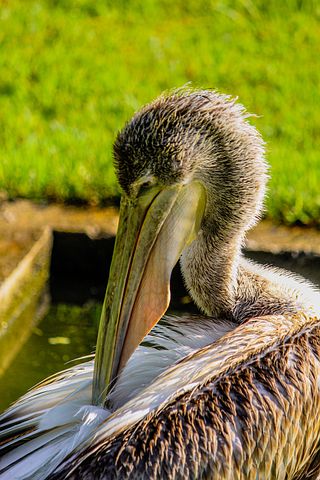Albania is perhaps the most atmospheric and distinctive country in Europe, which has been isolated from the world for half a century. What do we know about it? Practically nothing. And of this “nothing” a lot is untrue. No other country in Europe has so many myths and contradictory stories. Many are afraid to go there, and in vain! Albania is even safer than some European countries. The level of crime is quite low. When you come to Albania, it is like traveling by time machine. In this country European traditions are harmoniously combined with Asian customs and way of life, and the rapid development and ultramodernity – with the heritage of the communist era and the color of the early 20th century.

To learn more about such a mysterious country, we offer you a two-week itinerary through the country.
Day 1: arrival in Albania and transfer to Berat

Upon arrival at the airport, rent a car, eat in one of Tirana’s many restaurants with local food (read our article on Food in Albania) and drive to Berat. Just over 120 kilometers and a couple of hours drive to get to one of the most impressive places in Albania. In Berat you will find many hotels and hostels where you can stay overnight to gain strength.
Day 2: from Berat to Gjirokastra

Today it is time to thoroughly explore the beautiful city with a thousand windows. Berat is one of the most visited places in Albania because of its beauty. A UNESCO World Heritage Site, its historic center is divided into three distinct districts: the Christian district of Gorica, the Muslim district of Mangalem and the district of Kayala, the hilltop area where the fortress stands.
If you speak English, you should join a free guided tour of the historic center. Otherwise, you can walk quietly through each of the alleyways between century-old houses, churches, and minarets until you reach the highest point, the Castle of Berat. The tour could easily take you half a day.

After a thorough and relaxing tour of the city, and sure to have a hearty lunch, it is worth continuing the route through Albania. Your goal will be nothing less than to reach the fascinating town of Gjirokastra. A road trip that will take you about three hours and in which you will certainly want to stop at many places to enjoy the scenery, growing more and more beautiful as you approach your destination. Again, most likely you will arrive in the evening, try to calculate enough time to check in and find a central restaurant for dinner.
Tip: Be very careful with your cell phone’s GPS! It is best to buy a road map so that you can refer to it when plotting your route. Very often trusting GPS tourists go in the direction of Osum Canyon, of course it is impressive, but sometimes you do not want to turn off the right track.
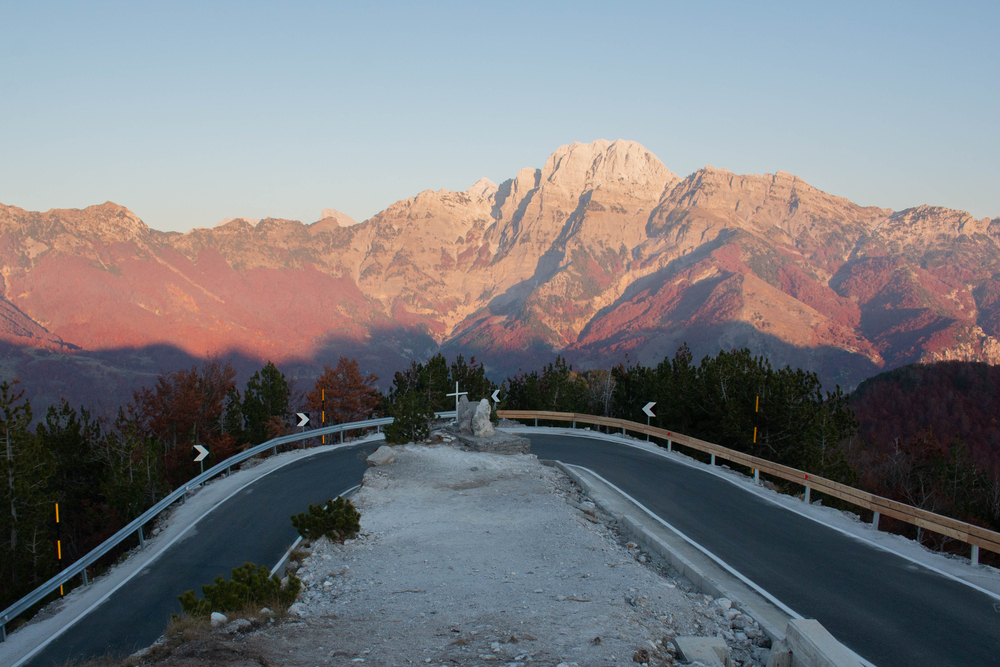
Day 3: from Gjirokastra to Ksamil
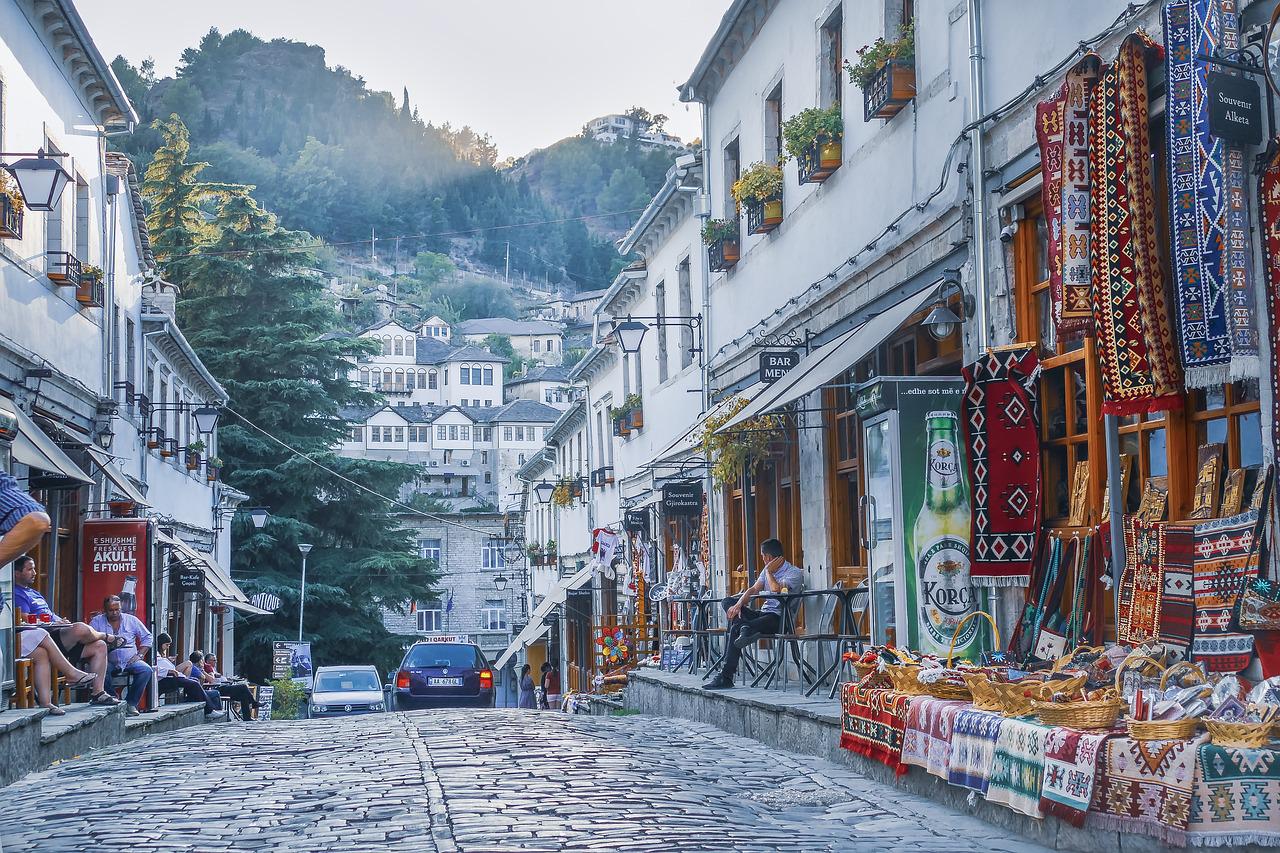
Certainly one of the busiest days on the Albanian route in terms of visits. So the recommendation is to get up as early as possible to wander the historic center of Gjirokastra, which may steal your heart. It is also a World Heritage Site, but offers a type of Ottoman-style palace architecture completely different from Berat. Again, it is most convenient to end your tour of the city at the top of the castle, which, although partially in ruins, is worth entering and enjoying the beautiful views.
Now yes, you will fully understand what the early morning is all about. It takes about an hour and a half to get to Hotowa Fir National Park and its Banyat y Benjes hot springs. Is that a lot of time to see the place? Maybe, but you’ll love it, and if you’re lucky you’ll spend a beautiful day in the warm water overlooking the mountains and the impressive Ottoman Cajut Bridge. Also, the drive to the area is very scenic and beautiful.
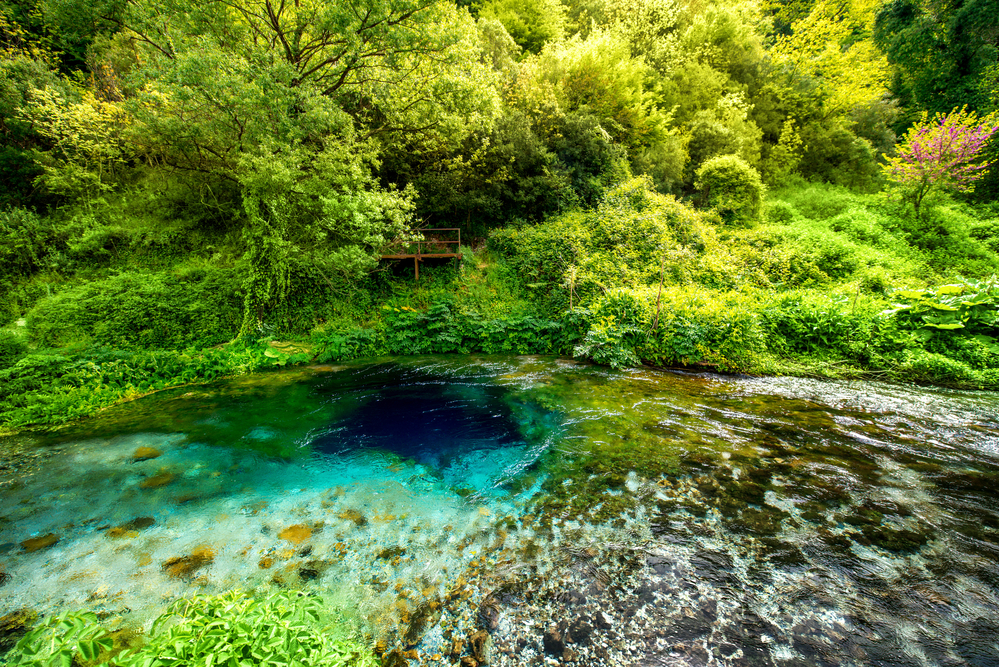
It is time to return again along the same road to Gjirokastra and from here to a special natural site, the Blue Eye Natural Monument or Syri i kaltër. It is a freshwater spring that emanates from the ground with super intense turquoise colors and forms a small crystal clear lake that looks very attractive. Yes, it is a beautiful place, but, a little overrated for all the tourism it attracts.
Then continue on to the last stop of the day, the third World Heritage site on the route, the ancient city of Butrint. There you will encounter an impressive archaeological site along the coast of the Ionian Sea, where you can observe the passage of the Greeks, Romans, Byzantines and Venetians over 3,000 years of history. The place is in symbiosis with nature and, it is an important stage in a road trip through Albania.
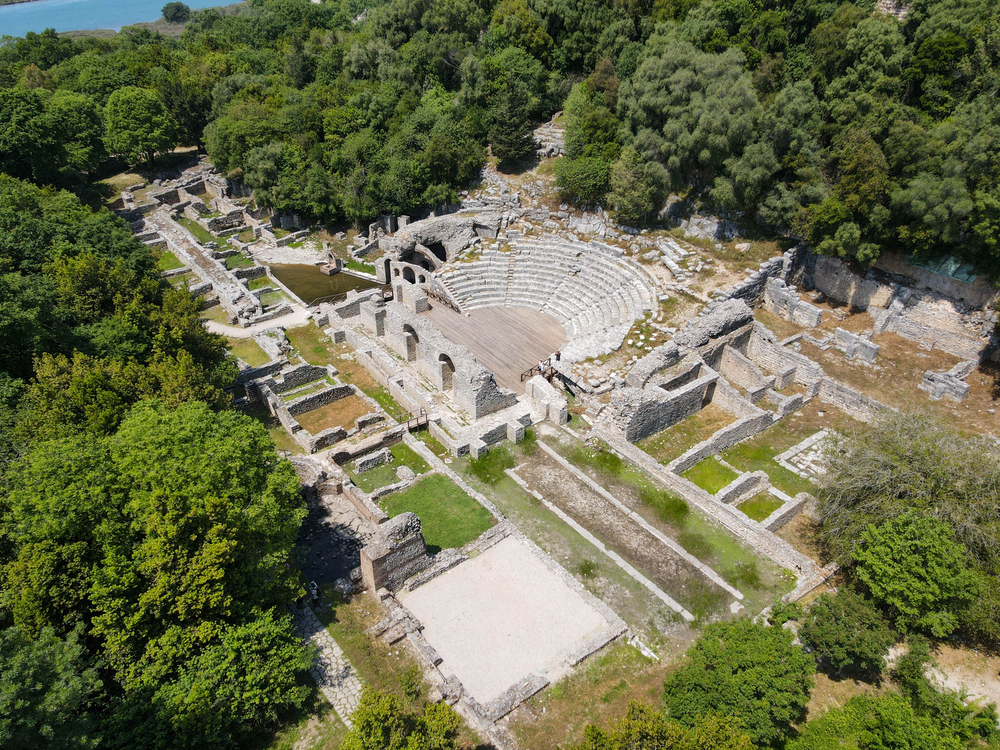
There were many miles of roads and many different places, so it’s best to go in the evening to a hotel in the coastal town of Ksamil and relax, because you deserve it.
ALTERNATIVE. Although these places are not that far from each other, you will spend more than 4 hours by car on the road along this route. If you don’t want to spend that much time driving, the ideal option in this case would not be to spend the night in Gjirokastra, but to stay right in Permete to enjoy the hot springs first thing in the morning and then continue on to Gjirokastra, then drive to Blue Eye and end in Butrint and Ksamil. In this way, you will save about an hour and a half drive.
Days 4 and 5: Albanian Riviera

It’s time to get up early again to enjoy the turquoise waters of Ksamil without too many crowds. Since this place is in one of the most popular areas of the Albanian Riviera, and although the level of overcrowding does not reach the heights of other coastal destinations, it is worth getting up early and visiting the most beautiful beaches of this town.
From here and after passing by Saranda, the largest and most urbanized coastal town in the area, there are two days in which you should only allow yourself to be carried away by the winding road, which between curves and slopes shows you the best of the Albanian coast. Don’t miss beaches like Borsch, Porto Palermo, Djipe, Jale and Himara. Here’s a complete overview for beach vacations in Albania: the best beaches of the Albanian Riviera.
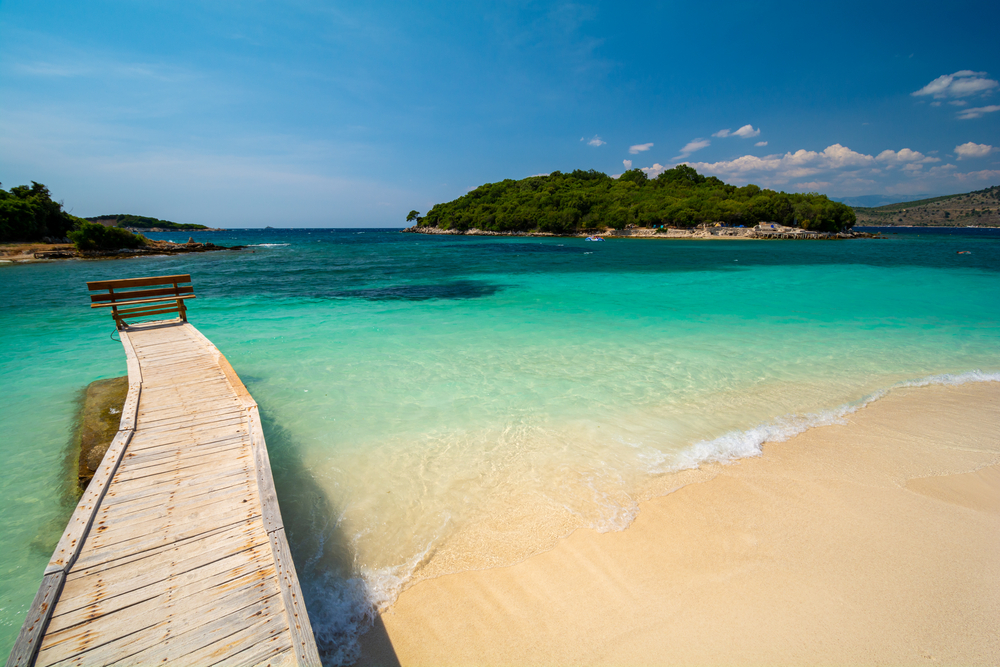
Is it worth spending two nights in Himara?
Any local and every seasoned traveler will tell you that yes. It is a relatively large town where you can find all the services, it is well located to get from beach to beach, and has a beautiful pebble beach, you will love it.
Days 6 and 7: from the Ionian Sea to the Adriatic
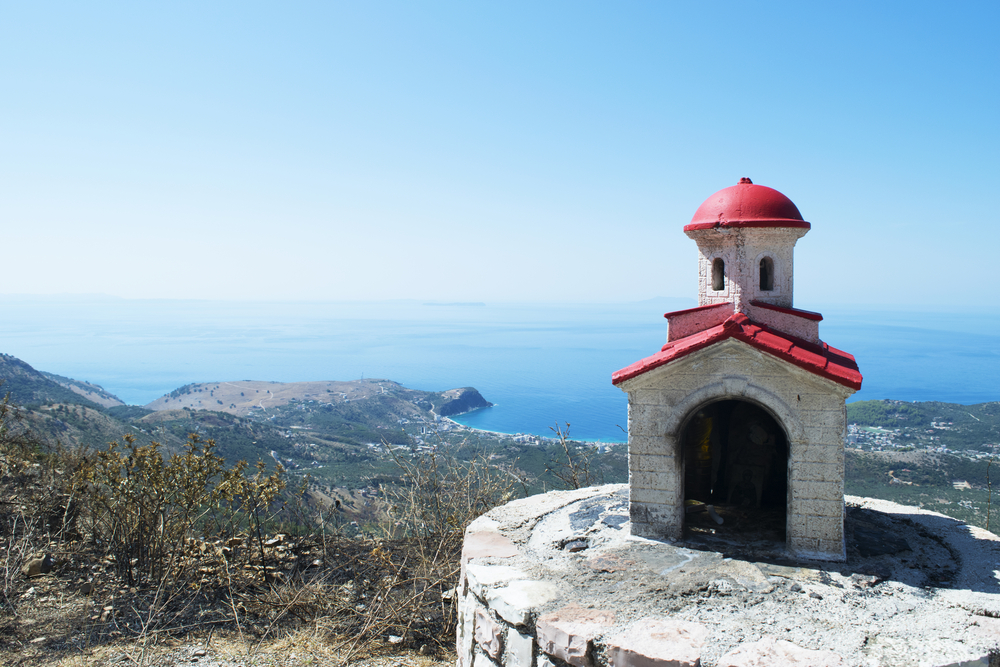
On the first day you can continue to explore the beaches and major attractions of the area. Don’t forget to visit Himara Castle or take a boat trip. You can find a small exit by the sea in Himara, which will lead you to a beautiful aquarium beach.
After swimming and relaxing on the beach it was time to continue along the winding coastal road SH8, which for several kilometers makes us climb from sea level to cross the mountain pass of Llogara, with a magnificent view of the sea from over 1000 meters high. We can stop for a while in the town of Vlore, a very touristy coastal town already washed by the waters of the Adriatic Sea, and spend two nights there.
On the second day you can take a boat trip from Vlora to the Caraburun Peninsula. This impressive natural jewel, where the waters of the Ionian Sea meet those of the Adriatic, has completely pristine and wild bays due to the fact that they can only be reached by sea or by rather long and difficult trails.
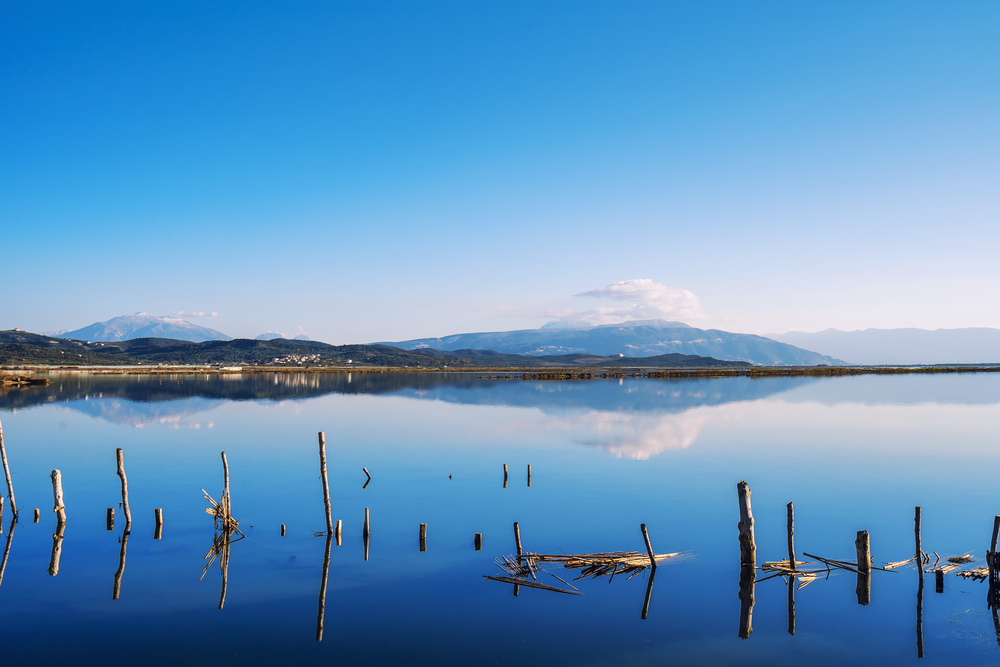
Among the places you can visit on the peninsula are the Grama Bay and the Hashi Ala Cave. Ideally, you can inquire about the options offered to you at the beach when you arrive in Vlora and rent a boat trip that will please you the most will give you the most to enjoy the wonderful views.
Day 8: Shkoder and lake Skadar
After a few days at the beach, it’s time to finally leave the coast and continue this 14-day itinerary through Albania in the mountains. It’s quite a long drive (about three and a half hours), in which you can take the opportunity to make a more than interesting stop in the Greek town of Apollonia. Just to see the Temple of Artemis, this diversion from the route is worth it.
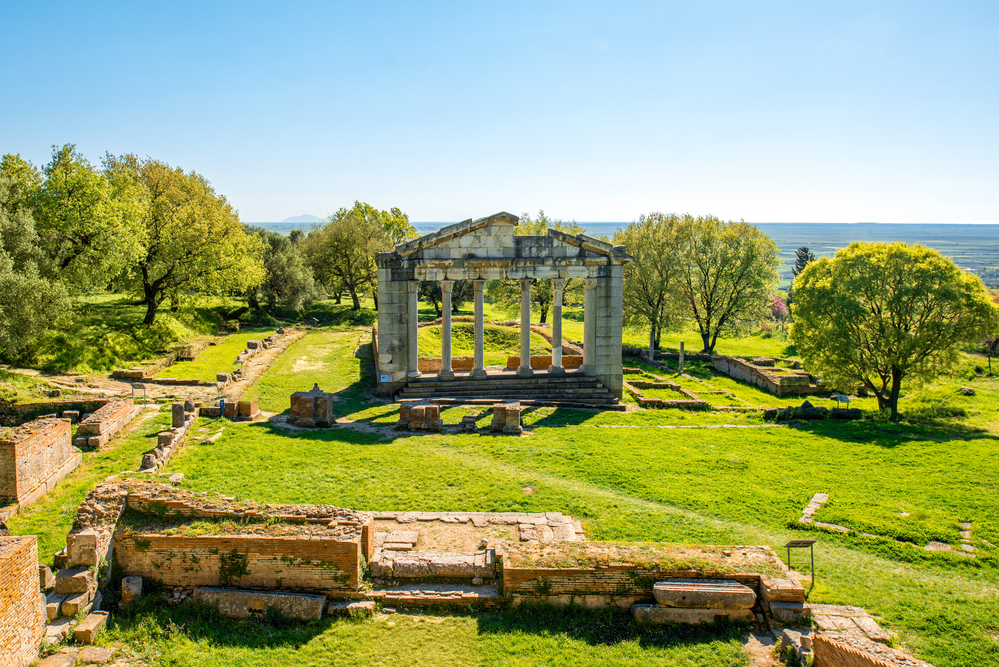
Then you continue the route until you reach Shkoder. You can visit the city itself later, so to enjoy the rest of the day, you’d better rent a bike to travel along the shores of Lake Skadar or Skodra (very close to the border with Montenegro) before sunset. Do not forget your swimsuit at the hotel, because you can have a good swim in the warm and clear water. You will find many bicycle rental stations in the most touristy areas of Shkoder and also offer boat excursions if you want to enjoy the scenery from the water.

Day 9: lake Koman and Valbona
Today is a special day. It’s time to leave the rental car to enjoy a multi-day hike in the mountains of Albania.

First of all, over the next few days, you should pack a backpack with the minimum you need for the next few days, and leave the rest in the rental car. The less weight you carry, the better, and you will soon realize.
The goal of this first day is to get to the beautiful town of Valbona in the heart of Valbona National Park, and for this we must combine three different transportation options:
- A bus ride from Schoder to the Koman Lake pier
- Boat trip on Lake Coman to Fiege pier
- Journey from Fiege to Valbona
You only had to reserve your seat on the first bus leaving at 6:00 am, and from there they put the whole itinerary together nicely so you could book and pay for the rest of the transfers on the fly, for a total of 15 euros. Nevertheless, a tip to you: ask at your hotel in Shkoder, about such an excursion and they will tell you the full itinerary.
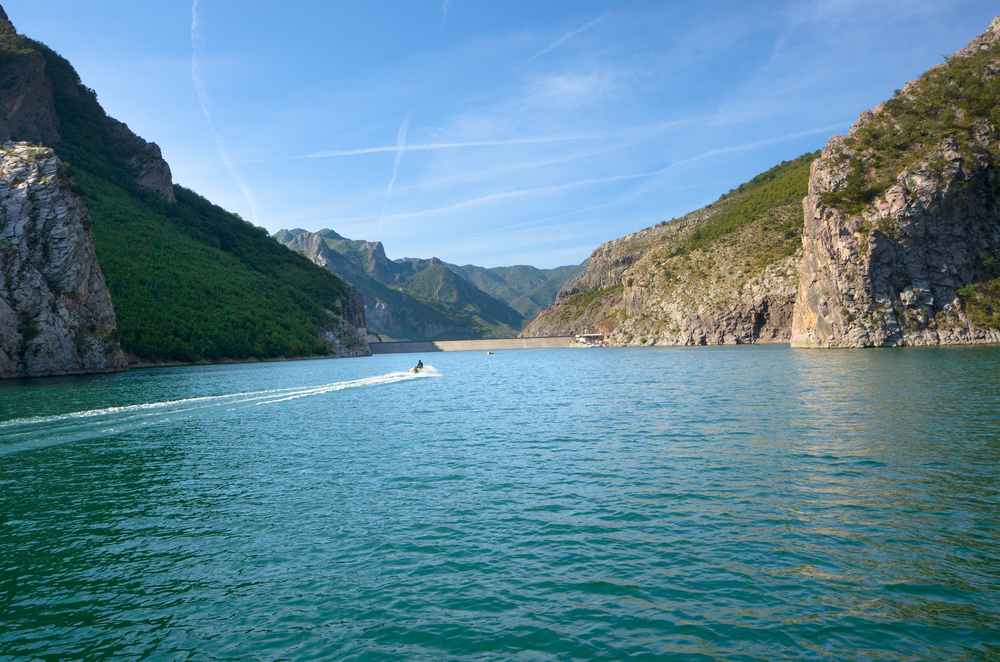
There are many hours of road and boat travel awaiting you, but the scenery is so beautiful, especially the boat ride on Lake Coman, that it is 100% worth it. In fact, it is a dam completely built between mountains and scenery of overwhelming beauty.
When you arrive in Valbona in the afternoon, you will have plenty of time to walk around and be impressed by the mountain scenery that surrounds you. If you have more time than indicated in the article, or prefer to organize yourself differently, an extra night in Valbona will allow you to hike the trails in the surrounding area.
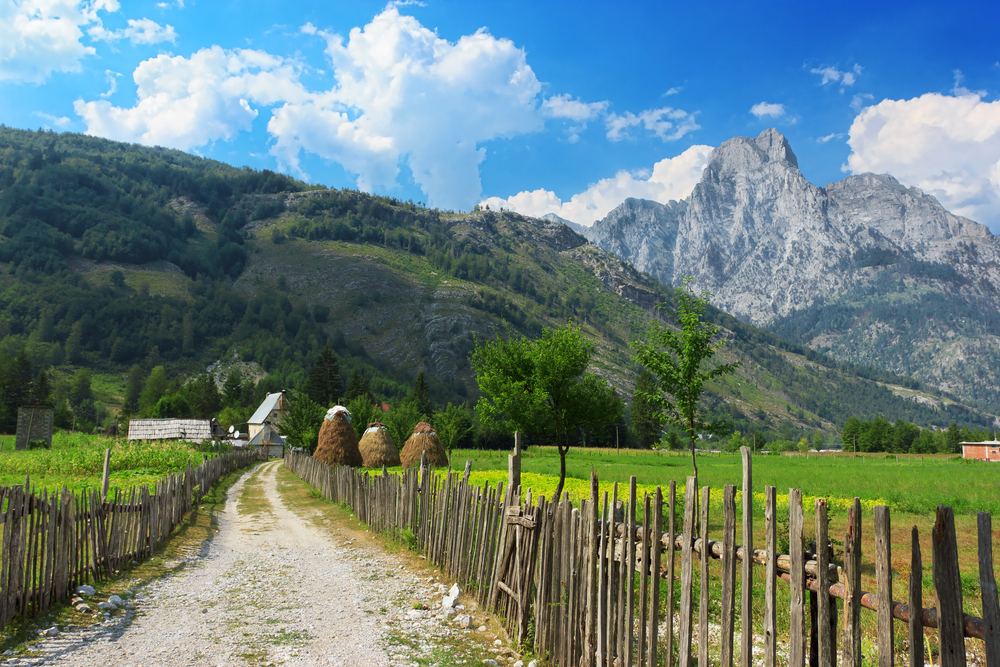
At this point I would like to point out the terrible waste management in Albania. Unfortunately, you will see a lot of garbage everywhere. This is especially noticeable on the way across Lake Coman. It’s sad to see so many bottles and containers floating in the water, but this is a common trend in the country.
Day 10: trekking from Valbona to Theth

This is the real reason you should bring a lightweight backpack. Today it’s time to move from Valbona to Theth National Park with a backpack on your shoulder, and you can do it on a wonderful hiking route. Although it has no technical difficulties, it is a long hike with a big difference in elevation, in which you will reach the so-called Valbona Pass at 1,795 meters.
Nothing that cannot be overcome by those accustomed to walking in the mountains, but is impractical for those who do not normally perform this kind of activity.
- Itinerary: linear (starting with Valbona and ending with Toy)
- Difficulty: medium/low (easy, but long and with a big difference in height)
- Length: from 12 to 16 kilometers (depending on the location of hotels)
- There are confusing sections where track is desirable.
- About 7 hours (with several stops)
- Altitude factor: 800 meters of ascent and 1000 meters of descent
As mentioned in this article, the ideal way to avoid walking so many kilometers is to book hotels in both Valbona and Tete as close to the beginning and end of the trail as possible. After the walk, it was time to rest and enjoy the beautiful panorama that surrounds us.
Day 11: hiking to Theth
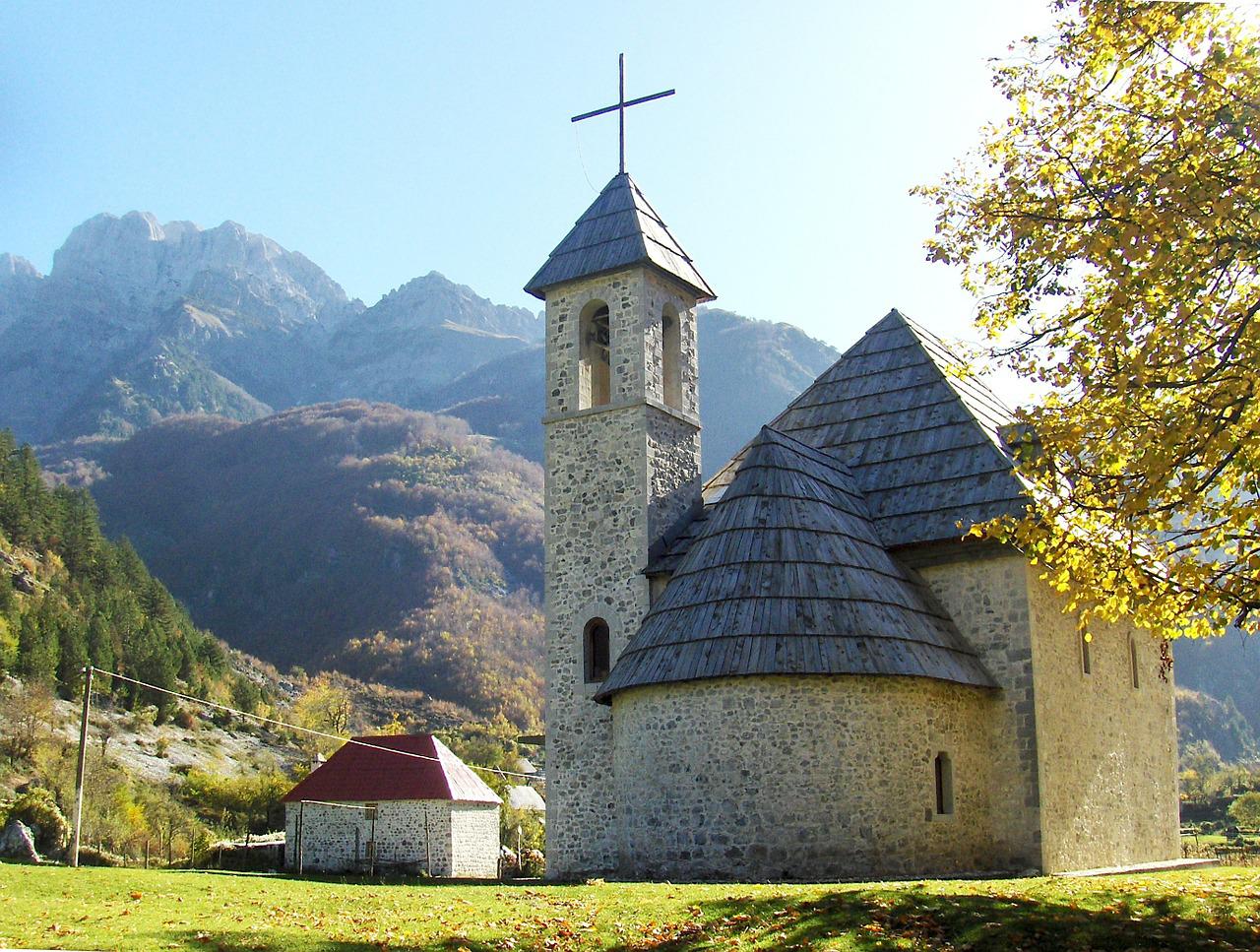
The best thing to do is to stay two nights in Theth. The idea is to have a free day to enjoy the city and the stunning scenery. Indeed, it is very worthwhile to use this extra day in Theth to tour the city and visit two spectacular natural landscapes: the Falls and Crane Canyon, and the Blue Eye natural pool.
Two hiking trails that you can combine thanks to the help of off-road cabs that bring you closer to the point where the climb to the Blue Eye begins. This wikiloc track will help you figure out what the entire route is like and how to shorten it by taxi.
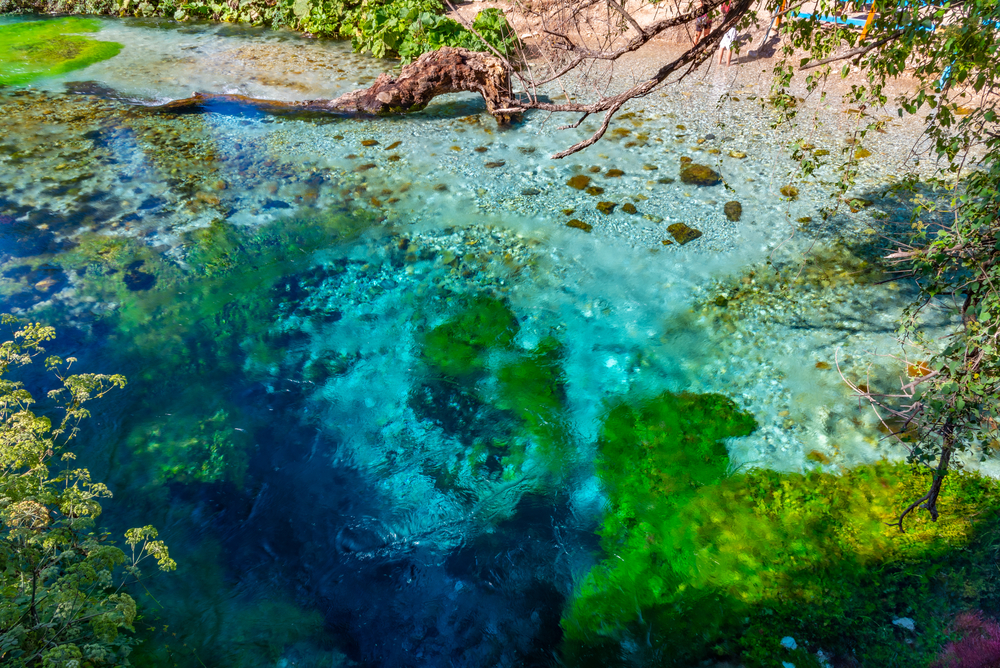
The next day it was time to leave the mountains and return to Shkoder. The transportation that covers this route is controlled on the fly, and the schedule depends on seasonal demand.
Day 12: return and visit Shkoder
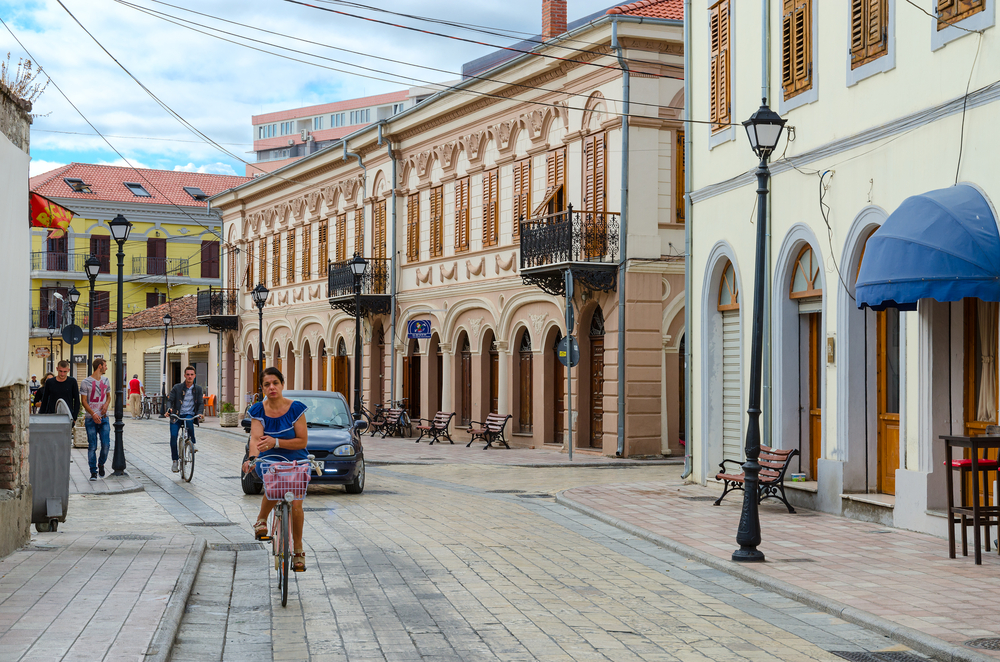
After a few hours bus ride back to Shkoder from Theth, it’s time to return to the same hotel where you will leave your rental car, grab all your belongings and enjoy a stroll through the city of Shkoder itself and its beautiful surroundings.
From the top of Rozaf Castle to the pedestrian streets of the historic center, Shkoder, while not Albania’s most beautiful city, exudes much charm. Especially for the cozy atmosphere that is inhaled in the center between the minarets, terraces and lots of local bustle.

In addition to visiting the town, you can take the car to enjoy other beautiful nearby places, such as the Ottoman Bridge of Mes, about 10 kilometers away. Following the same road and driving another 10 kilometers, you will find a set of natural pools called Canioni y Kirit.
Or, what if I don’t want to hike from Valbona to Thet?
Don’t worry, this 3-day/4-day circular route through the mountains, including a hike that is not for everyone, is not the only way to visit this beautiful area of Albania. So, if that’s the case, if you can’t or don’t want to do it that way, here’s an alternative of the same length.
- DAY 9. Transfer to Theth by rented car (be careful, because there are unpaved sections) or by public transport
- DAY 10. Free day in Theth for hiking trails
- DAY 11. Return to Shkoder, visit the town and the nearby Mes
- DAY 12. On this day I recommend a car trip to the Koman Lake pier, and from there a boat trip that takes you on a tour of the best points of Koman Lake with a detour to the turquoise waters of the Shala River. Ideally, this boat trip should be hired from Shkoder or, directly, book a full tour in which you do not need to move your own car.
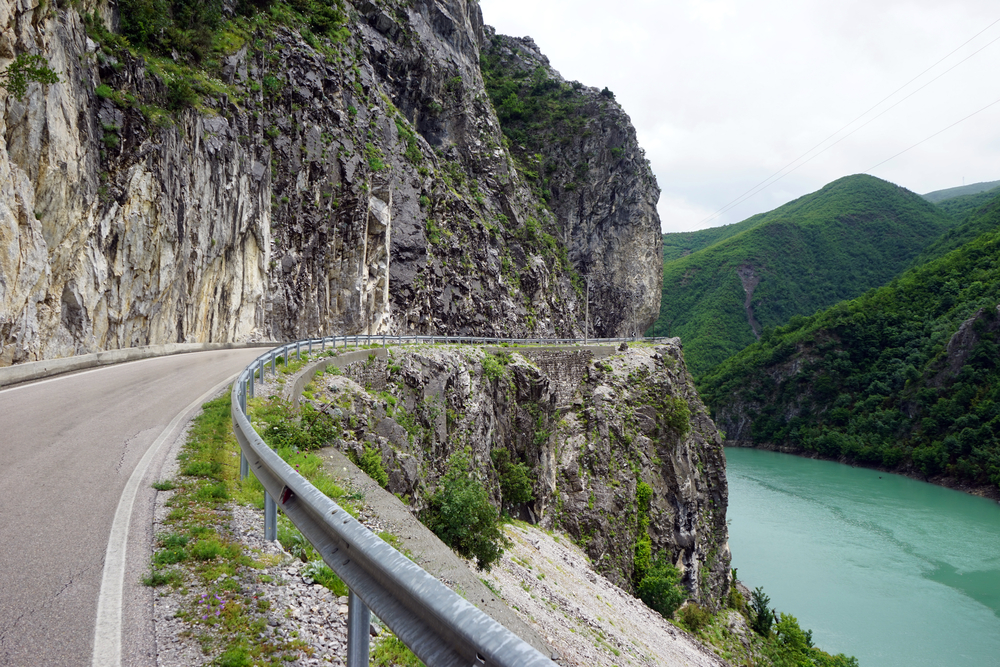
It is also impossible not to recommend an excursion to the Shala River, which is called Albanian Thailand because of the impressive color of the water. Of course, it looks incredible and there are very positive opinions about the area. But there are also complaints and they focus on the overcrowding of the place in August. However, it is worth noting that if you travel in August, you will find a lot of local tourism throughout the country.
Day 13: Krujë and transfer to Tirana
The route through Albania is coming to an end, but we still have some surprises along the way. From Shkoder to Tirana there is a trip of about 2 hours that includes more than the obligatory two stops, first at Lake Shkopet and then at Krujë.
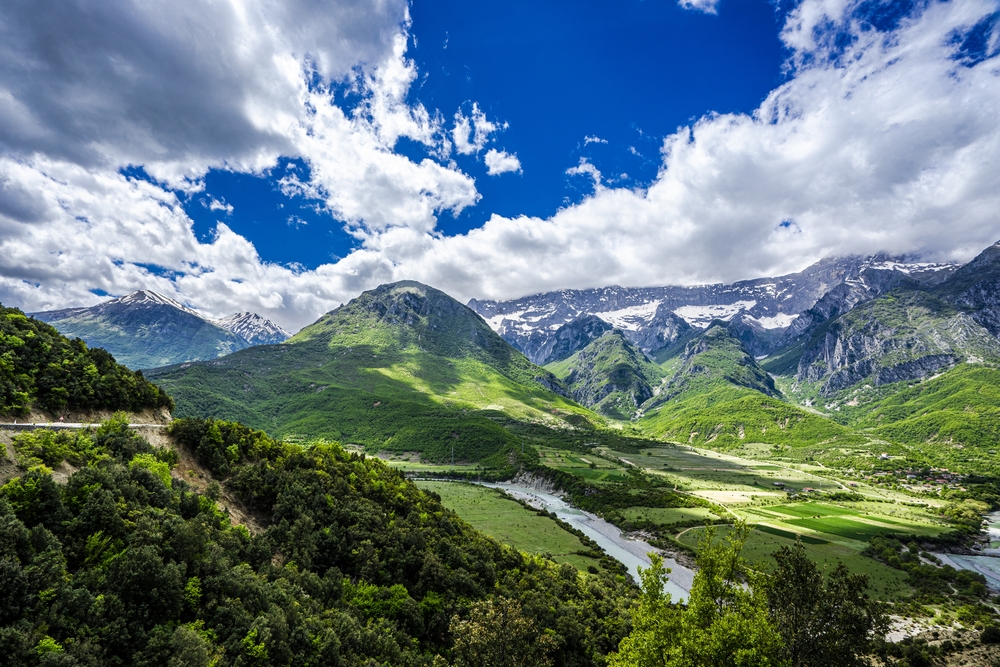
Your first stop at Lake Shkopet leads you through mountain scenery, marked by the intense emerald green of the Mat River and the impressive rocky walls that fit into its route. Although you will make a short stop to admire the landscape, it should be noted that you will be in Ulza Regional Park with other nearby attractions as important as Ulza Lake itself.
Then you continue on to Krujë. The old medieval fortress city, inside of which the Skanderbeg Museum and the Ethnographic Museum are worth a visit, seems to take you back in time. Also wonderful is its old bazaar, which, although small in size, has a lot of charm.
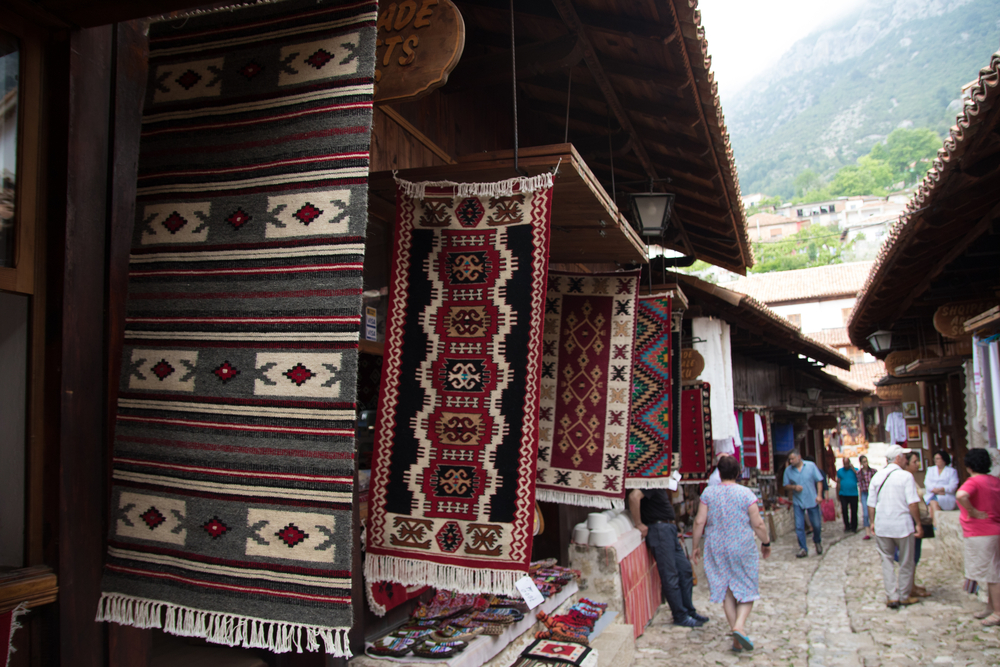
After the visit, it was time to make one last stretch along the route to the country’s controversial capital, Tirana.
Day 14: A visit to the capital. Tirana

After many kilometers of roads, we recommend spending two nights in Tirana and using the last day to visit the capital of Albania. We must admit that it is a city that at first can get you excited, especially with its traffic, but little by little it relaxes you and gives you the opportunity to fully experience the Albanian color. In fact, the final conclusion is that your visit is worth it, if you do it unbiased and have enough time. For example, for a trip lasting less than a week, it is probably worth devoting only a few hours or a day to it.
During the day, in addition to a tour of the historic center, which is very necessary to understand the history of the country and the reason for many things, you can visit the National History Museum, enter the Clock Tower and Etem Bay Mosque as well as the Bunk‘Art 2 Museum, climb Mount Dakht by cable car and enjoy the steepest side of Tirana in the Bloku district.

You have all the extensive information and other interesting plans in this full post about Tirana.
If you do not want to spend your last days in the capital, you can consider an alternative for this time. This is Lake Ohrid, a huge lake separating Albania and Macedonia, which offers beautiful scenery and monuments such as the Church of St. John of Kaneo or the Monastery of St. Naum.
- DAY 13: Transfer from Shkoder to Lake Ohrid with an intermediate stop in Kruja
- DAY 14. Continue visiting the lake with a border crossing into Northern Macedonia (if the car rental agreement allows it) and return to spend the night in Tirana.
If the lake does not convince you, another good alternative would be to return to the coast to visit the lagoon of Karavasta (or take a route to make this visit from Vlora just before going up to Shkoder). This is an important wetland and refuge for numerous bird species off the Adriatic coast. Pelicans are the main characters here.
